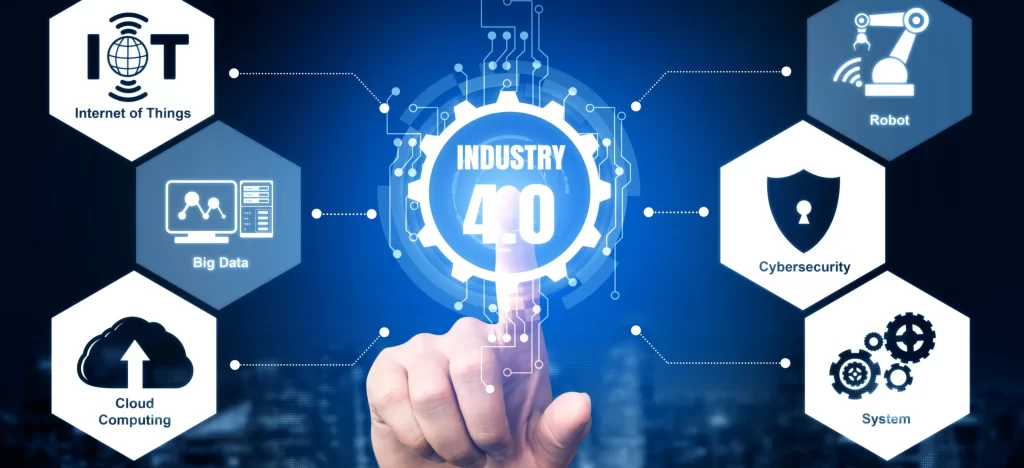Introduction
Manufacturers today need an analytics platform to turn shop-floor data into daily decisions. Smart factories that adapted to IIoT and AI tech are reporting stronger performance and resilience across plants. But how do manufacturers choose an analytics platform that is best suited for their factory floors?
In this blog we compare Vistrian’s suite of tools with Siemens’ array of products to find out which platform is better suited for your factory needs.
Industrial IoT & Shop-floor Visibility
Industrial IoT gives manufacturers live visibility into machines, lines, and shifts. By streaming data taken from sensors into live-view dashboards, teams spot bottlenecks early, respond to alarms faster, and keep quality consistent. Real-time data also powers predictive maintenance which catches anomalies before failures.
| Features | Vistrian FactoryLOOK | Siemens Insights Hub |
|---|---|---|
| Asset connectivity | Connects directly to machines and legacy systems to on-premises servers or cloud. | Connect assets to the cloud. |
| Real-time alerts and monitoring | Evaluates live data and triggers real-time alerts. | Visualizes data for operational transparency. |
| Dashboards | User customizable, real-time dashboards with role-based views. | Customizable dashboards with alerts and analytics. |
| Deployment | Web-based access, designed to span across sites and integrates with Vistrian’s suite of tools. | Supports plugins and runs in either public or private cloud. |

Production Flow that is Traceable
An MES coordinates how work moves from order to finished goods. It dispatches jobs, guides operators with digital instructions, records work-in-progress and enforces quality steps. This creates a live view of every line.
By integrating with machines and existing systems, teams resolve issues faster, cut manual errors, and simplify compliance. When an MES is fed with IIoT data, bottlenecks surface earlier and schedules adapt in real time, lifting throughput and on-time delivery.
| Features | Vistrian FactoryLOOK | Siemens Insights Hub |
|---|---|---|
| Customization | Highly configurable workflows and forms without deep coding. | Configurable templates require specialized customization for industry-specific needs. |
| Data Historian | Includes built-in historian for continuous process and machine data logging. | Relies on external historian or Siemens Industrial Edge for time-series data management. |
| Guided work instructions | Shows clear actions with digital instructions and routes issues to the right team. | Provides electronic work instructions with screens to guide operators. |
| Go-live speed | Deployable within days. | Timelines vary by project and industry. |

Smart Maintenance to Prevent Downtime
An effective maintenance management system puts assets, work orders, and schedules in one place, so issues turn into prioritized jobs with clear steps and planning. It keeps histories for each asset, manages spares, and generates audit records.
Many maintenance systems add analytics and AI to flag anomalies, recommend actions, and close the loop from alert to fix. The benefit is faster response, steadier uptime, and a clearer view of cost, risk, and performance across sites.
| Features | Vistrian FactoryLOOK | Siemens Insights Hub |
|---|---|---|
| Maintenance and Upgrades | Lightweight footprint allows faster updates and minimal disruption. | Version upgrades can require system downtime and validation cycles. |
| Work orders | Provides automated work flows out of the box, structured checklists, spare parts management, TPM tracking, and calibration management. | Provides connected maintenance workflows. |
| Predictive maintenance | Uses AI-driven predictive analytics to anticipate equipment failures. | Offers predictive maintenance through Insights Hub. |
| History & audit trail | Keeps accurate maintenance logs with audit-ready histories for assets and jobs. | Provides a maintenance logbook to record past work. |

Conclusion
Selecting the right industrial analytics platform is about matching technology with how your factory works. Every factory has its own mix of machines, processes, and people, and the platform you select will shape how they all work together. Making the right choice sets the foundation for smoother operations today and adaptability for tomorrow.

